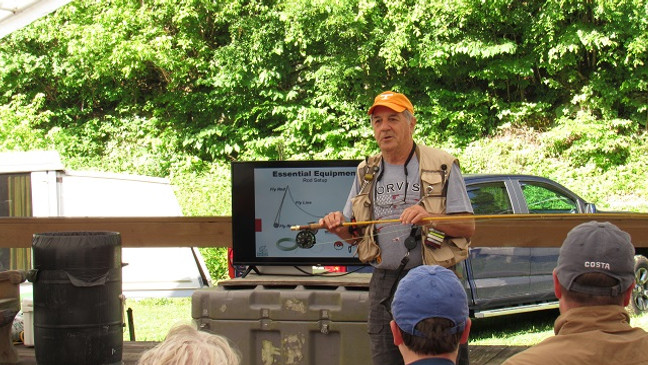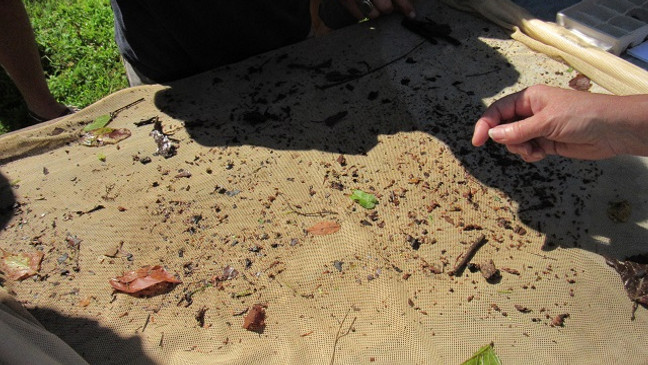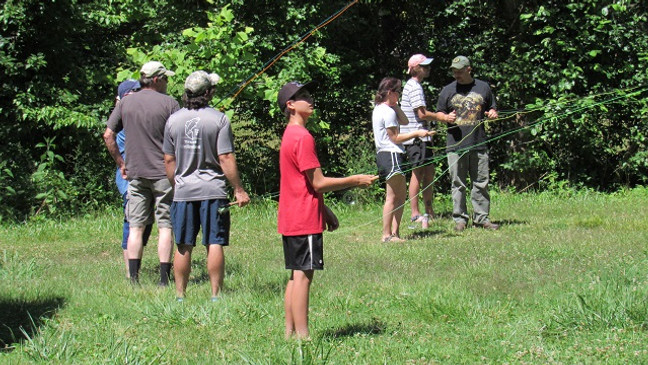Fly Fishing Classes
CHEROKEE NATIONAL FOREST, Tenn. — After turning off U. S. Highway Eleven, it is mandatory that you take your time to negotiate the multitude of curves for the next seven miles to Reliance, Tennessee. Some curves require a slight tap on the brake pedal. Others demand healthy pressure.
The seven miles is a refreshing drive along portions of the Hiwassee River while taking in the scenery of the Cherokee National Forest. My grandson is starting to fly fish. The first year’s event by the Hiwassee Chapter of Trout Unlimited would be both a learning experience and a refresher course.
Backtracking to 1959, a group of concerned trout anglers met on the banks of the Au Sable River in Michigan. The goal was to move the state of Michigan from the stocking of “cookie cutter” trout to maintaining the rivers for wild, native trout. Later the state of Michigan implemented the new program. As the organization grew, the idea spread to Illinois, Wisconsin, New York and Pennsylvania. Trout Unlimited now has thirty-six state councils with three hundred eighty seven chapters including eight chapters in Tennessee.
The success of the organization is due to efforts grounded in science as they deal with issues surrounding coldwater species as trout and salmon.
The Hiwassee Chapter of Trout Unlimited is an offspring of that meeting so long ago. The Hiwassee River is their focus - its overall health, proper use, and the fishery for rainbow, brown and brook trout. The water flows from the Apalachia Dam in North Carolina create fluctuating temperatures and water levels that aren’t conducive for natural reproduction. Stocking is necessary but the size of holdover trout can be amazing. There are those who have caught small rainbow trout that indicate natural spawning but hasn’t been confirmed by the presence of redds (nests).
Rounding the curve at Childers Creek Road revealed a scene I had never seen before! The parking lot and campground were packed! The chapter has had a monthly gathering at the Reliance Fly and Tackle for more years than I can remember. This day was the first meeting this year due to delays brought on by the corona virus. Attendance was phenomenal with 41 people who signed up through the Facebook page.
Finding a slot for my little car made me glad I didn’t drive the pickup truck. The low buzz of conversation on the covered deck reminds one of a beehive, that is, lots of activity. Peyton Holcombe welcomed the group and took a quick survey. There were a variety of answers- want to try fly fishing; learn more about the river and how to fish it, expand their list of fishing places. A Power Point by Warren Tamargo was shown along with use of fly rods, reels, tackle and accessories. Questions are answered along with the appropriate item shown.
The group took a short break and met behind the store along Childers Creek for the bug sampling. Aquatic life is taken from Childers Creek to teach what is present, what trout eat, what flies that imitate bugs at their various life stage. Member Mary Alton held the seine while another member stirred up the bottom and cleaned off rocks to dislodge aquatic life to drift into the seine. Here is where the fun begins!
The seine is placed on a picnic table. Adults and kids take positions around the picnic table to find things as insect larvae and crawfish to be placed in a tray for observation and identification. The score sheet is used by many agencies to determine water quality, assigning a value to different things found in the water. A score of twenty-two is passing with a twenty-three tallied today. Another Power Point displayed some of the more common insects, their development stages and the flies that imitate them.
Casting lessons followed another short break. Due to the large group, an open area across the road was used. Several fly rod outfits have been donated by sponsors are handed out by the members. Spacing is done to allow room to cast. Warren Tamargo shows the proper way to thread the line and leader. Class begins when everyone is ready.
The basic pick-up-and-put-down cast is demonstrated. The class begins to cast. Members mix with the group to offer tips on the proper and efficient casting motions. Some get the giggles at their first attempts but settle into a routine of picking up the line, making a backcast and laying down the line like one would do on the river. The class breaks up with several declaring to practice more and come back next month.
The chapter offers “post-graduate” classes for those who want to take their skills to another level. The second step is fishing the Hiwassee River by learning how to wade safely, learning places where fish hide or feed and how to present a fly to catch them.
The third class is learning to tie flies by using various materials and the techniques to apply the materials to a hook. Imitation of insects, minnows and terrestrial insects as grasshoppers top the list of flies.
Photos courtesy of John Torchick







